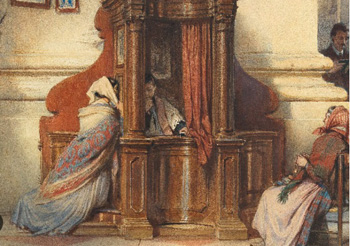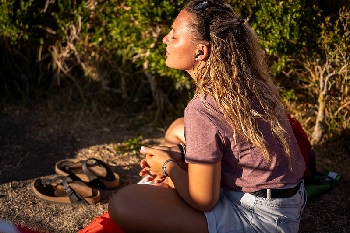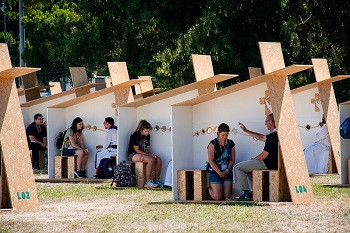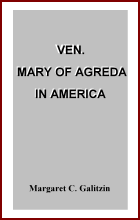Faith under Attack
 |
 |
 |
 |
 |
 |
 |
WYD 2023 – Part III
Examination of Conscience
The stark contrast between the progressivist vs Catholic concepts of Faith is made fully apparent in the WYD-2023’s “Examination of Conscience,” which I will focus on in this article.
Undermining sin Faith & purity
The Sacrament of Penance, which inspired many manuals for confessors (see here), must be preceded by a serious examination of conscience by the penitent, in order to find his faults. Confession, known as God’s Tribunal, was always considered a grave matter, and the Church prescribed careful preparation for the Catholic to accuse himself of his sins before God.
 The World Youth Day Examination of Conscience is entirely the opposite of this. The WYD Examination, which was made available on the World Youth Day website as well as the Lisboa 2023 mobile application, makes blatant omissions, which should be shocking to any Catholic. The most noticeable omissions are:
The World Youth Day Examination of Conscience is entirely the opposite of this. The WYD Examination, which was made available on the World Youth Day website as well as the Lisboa 2023 mobile application, makes blatant omissions, which should be shocking to any Catholic. The most noticeable omissions are:
Rather than a Question/Answer format based on the Ten Commandments or a serious exposé of sins against God, self and neighbor, the WYD Examination is comprised of four parts: Waking up, Sitting, Rising up, and Pilgrimage. Its format could be applied to a yoga exercise, certainly not an examination to find one’s own sins.
Further, in contrast to the self-examinations of the past that were traditionally made at the end of the day, the WYD Examination encourages it to be done in the morning, upon waking. It seems progressivists spared nothing in their desire to turn the Catholic faith upside down.
 The objective of the Examination is given: “In this journey, I will follow the movements of God in my life and the movements of my body, which open themselves to the novelty of forgiveness, from waking up to walking.”
The objective of the Examination is given: “In this journey, I will follow the movements of God in my life and the movements of my body, which open themselves to the novelty of forgiveness, from waking up to walking.”
Again, the focus is on the “revelation” of a divine immanence in each one’s life, and also strangely, on the body. Are the youth of today not sufficiently targeted with pornographic propaganda everywhere, whether on TV, at school, or most often, on the internet? Why is Progressivism obsessed with “movements of the body”? It is alarming that progressivist authorities are encouraging young people to focus on their bodies in this way, instead of encouraging them to eradicate sins of their souls. Does this not seem entirely inappropriate, more akin to a Hindu yoga session?
A subjective Faith
The Examination begins with “Waking Up.” It is not an invitation to consider one’s sins, but to “read my past by the light of a hope that awakens me.” It is to “rejoice” and discourage “repetition.”This last point seems a progressivist epithet for traditional truth and piety. Consider the text:
“I open my eyes in the midst of the night I am going through and become aware of my body, my entire history, with joys and sorrows, expectations and anxieties. I become aware of my past, and read it by the light of a hope that awakens me. At this dawn, how do I see myself? Do I accept my uniqueness or give space to comparison, discouragement and repetition? Do I rejoice in the life that has been given to me, with all its gifts?”
The Examination then moves to its second part, “Sitting,” telling the youth to allow himself to “be worked by silence” (whatever that means) and to “feel everything in harmony” and to “relate with time.”
This “feeling everything in harmony” is quite similar to the yoga and Hindu meditation, which aims to put the person in harmony with the universal energy of the cosmos. The only thing missing in this Examination is to tell youth to sit with their legs crossed, their wrists on their knees, their index fingers and thumbs joined in a circle, and to chant “ommm” slowly and deliberately, eyes closed.
 The text referring to the “Sitting” section follows:
The text referring to the “Sitting” section follows:
“I sit and let myself be worked by silence. Slowly, I allow time to tell my days. How do I relate with time? What priorities do my days have? Do I feel everything in harmony? What divides me? To what extent, in the deepest part of myself, do I allow myself to be reconciled with my wounds, doubts, mistakes, failures and restlessness? Am I able to name them?”
Next, a personalist and subjective text comes in the “Rising Up” section, insisting that we are incomplete without the “other,” that freedom and peace are above everything and that the only problems arise from discord, criticism, misinformation and violence:
“I want to learn how to rise from the ground of fear, anxiety and loneliness. But only my own strength is not enough. I need to open myself to the other who, in his/her difference, completes me. ... Am I a bearer of freedom or am I deceived by the desire for control, consumption, and manipulation? ... Do I seek to cultivate peace or instigate discord? How do I take care of life when it presents itself as fragile? …. Do I feel responsible for the world I inhabit? Have I been interested in building a more fraternal, reconciled, truthful and just world? Do I use the means at my disposal to promote truth, or do I subject/subdue myself to easy criticism, misinformation and violence?”
The Examination finishes with “Pilgrimage,” telling the youth to embrace the “adventure” of “being a Christian” and making a Pentecostal appeal to be “attentive to the movements of the Spirit in my life”:
“Now that I am standing, I ascend to the horizon of my gaze. Do I feel accompanied? ... Am I attentive to the movements of the Spirit in my life, in the relationships and situations that are given to me? What obstacles prevent me from journeying with companionship?
“Being a Christian is an adventure, an encounter with a Person. How does Jesus become a companion on this journey? Do I seek Him in the breaking of Bread, in the listening of the Word, and in the fraternal sharing? Do I accept Jesus as the possibility of Light for my darkness and the Face that pulls me out of selfishness? How does this encounter challenge my dreams and projects? …
After presenting this New-Age, body-centered Examination focused on love and peace, is the youth encouraged to ask God to help him to see his sins in order to accuse himself in the Confessional? Certainly not. Here is the concluding prayer:
 God of Love,
God of Love,
You look upon my life
From the movement of Your Heart.
Grant to the days of my story
The clarity of Your interiority
And mercy as balm
For the wounds of time,
Of relationships and situations.
Move in my thoughts,
Speak to my mouth,
Transform every action
And uncover the refuges of my heart.
This I ask You through the Spirit
Who guides us through Your Son
To the Face of Your forgiveness.
Amen.
How does this compare to the traditional examination of conscience prayers? Even the format is backwards, because in the WYD Examination the prayer is given after the examination, whereas traditional examinations have a prayer asking for divine assistance before the examination of conscience.
After reading traditional examination prayers (here, here, and here), one can see there is a clear format:
It seems very much like a new religion being preached to the youth, entirely opposite of the Catholic Faith.


Undermining sin Faith & purity
The Sacrament of Penance, which inspired many manuals for confessors (see here), must be preceded by a serious examination of conscience by the penitent, in order to find his faults. Confession, known as God’s Tribunal, was always considered a grave matter, and the Church prescribed careful preparation for the Catholic to accuse himself of his sins before God.

Nothing of the traditional Sacrament of Penance is found in the WYD 2023’s Examination of Conscience
- Sin in general. This progressivist examination does not mention sin even once, much less the difference between mortal and venial sin. Is that not the point of the examination of conscience - to find the sins one has committed in order to confess them in the Sacrament of Penance, now regrettably called “Reconciliation”?
- The Ten Commandments. Traditional pre-Vatican II examinations specifically referenced the Ten Commandments and gave precise examples of sins against each commandment - see examples for young men and women here and
here. No reference to the Ten Commandments is found in this examination.
- Sins against the Faith & purity. The two biggest sins of our time, particularly for the youth, are deliberately omitted.
Rather than a Question/Answer format based on the Ten Commandments or a serious exposé of sins against God, self and neighbor, the WYD Examination is comprised of four parts: Waking up, Sitting, Rising up, and Pilgrimage. Its format could be applied to a yoga exercise, certainly not an examination to find one’s own sins.
Further, in contrast to the self-examinations of the past that were traditionally made at the end of the day, the WYD Examination encourages it to be done in the morning, upon waking. It seems progressivists spared nothing in their desire to turn the Catholic faith upside down.

A cross-legged young woman meditating while listening to music, at the WYD Via Crucis
Again, the focus is on the “revelation” of a divine immanence in each one’s life, and also strangely, on the body. Are the youth of today not sufficiently targeted with pornographic propaganda everywhere, whether on TV, at school, or most often, on the internet? Why is Progressivism obsessed with “movements of the body”? It is alarming that progressivist authorities are encouraging young people to focus on their bodies in this way, instead of encouraging them to eradicate sins of their souls. Does this not seem entirely inappropriate, more akin to a Hindu yoga session?
A subjective Faith
The Examination begins with “Waking Up.” It is not an invitation to consider one’s sins, but to “read my past by the light of a hope that awakens me.” It is to “rejoice” and discourage “repetition.”This last point seems a progressivist epithet for traditional truth and piety. Consider the text:
“I open my eyes in the midst of the night I am going through and become aware of my body, my entire history, with joys and sorrows, expectations and anxieties. I become aware of my past, and read it by the light of a hope that awakens me. At this dawn, how do I see myself? Do I accept my uniqueness or give space to comparison, discouragement and repetition? Do I rejoice in the life that has been given to me, with all its gifts?”
The Examination then moves to its second part, “Sitting,” telling the youth to allow himself to “be worked by silence” (whatever that means) and to “feel everything in harmony” and to “relate with time.”
This “feeling everything in harmony” is quite similar to the yoga and Hindu meditation, which aims to put the person in harmony with the universal energy of the cosmos. The only thing missing in this Examination is to tell youth to sit with their legs crossed, their wrists on their knees, their index fingers and thumbs joined in a circle, and to chant “ommm” slowly and deliberately, eyes closed.

The pop-up confessionals in WYD’s ‘Forgiveness Park’
“I sit and let myself be worked by silence. Slowly, I allow time to tell my days. How do I relate with time? What priorities do my days have? Do I feel everything in harmony? What divides me? To what extent, in the deepest part of myself, do I allow myself to be reconciled with my wounds, doubts, mistakes, failures and restlessness? Am I able to name them?”
Next, a personalist and subjective text comes in the “Rising Up” section, insisting that we are incomplete without the “other,” that freedom and peace are above everything and that the only problems arise from discord, criticism, misinformation and violence:
“I want to learn how to rise from the ground of fear, anxiety and loneliness. But only my own strength is not enough. I need to open myself to the other who, in his/her difference, completes me. ... Am I a bearer of freedom or am I deceived by the desire for control, consumption, and manipulation? ... Do I seek to cultivate peace or instigate discord? How do I take care of life when it presents itself as fragile? …. Do I feel responsible for the world I inhabit? Have I been interested in building a more fraternal, reconciled, truthful and just world? Do I use the means at my disposal to promote truth, or do I subject/subdue myself to easy criticism, misinformation and violence?”
The Examination finishes with “Pilgrimage,” telling the youth to embrace the “adventure” of “being a Christian” and making a Pentecostal appeal to be “attentive to the movements of the Spirit in my life”:
“Now that I am standing, I ascend to the horizon of my gaze. Do I feel accompanied? ... Am I attentive to the movements of the Spirit in my life, in the relationships and situations that are given to me? What obstacles prevent me from journeying with companionship?
“Being a Christian is an adventure, an encounter with a Person. How does Jesus become a companion on this journey? Do I seek Him in the breaking of Bread, in the listening of the Word, and in the fraternal sharing? Do I accept Jesus as the possibility of Light for my darkness and the Face that pulls me out of selfishness? How does this encounter challenge my dreams and projects? …
After presenting this New-Age, body-centered Examination focused on love and peace, is the youth encouraged to ask God to help him to see his sins in order to accuse himself in the Confessional? Certainly not. Here is the concluding prayer:

A subjective faith focused on joyful feelings
You look upon my life
From the movement of Your Heart.
Grant to the days of my story
The clarity of Your interiority
And mercy as balm
For the wounds of time,
Of relationships and situations.
Move in my thoughts,
Speak to my mouth,
Transform every action
And uncover the refuges of my heart.
This I ask You through the Spirit
Who guides us through Your Son
To the Face of Your forgiveness.
Amen.
How does this compare to the traditional examination of conscience prayers? Even the format is backwards, because in the WYD Examination the prayer is given after the examination, whereas traditional examinations have a prayer asking for divine assistance before the examination of conscience.
After reading traditional examination prayers (here, here, and here), one can see there is a clear format:
- First, thanking God for His mercy and for Christ’s Sacrifice on the Cross for us, and acknowledging our own sinfulness;
- Second, imploring God’s grace through the Holy Spirit, Our Lady, and the Saints;
- Third, specifically asking God to help us see our own sins clearly so that we can confess them, detest them, and make penance for them.
It seems very much like a new religion being preached to the youth, entirely opposite of the Catholic Faith.

Since sin or penance does not exist, youth are encouraged
to live a carefree life without morals or good customs

Posted October 16, 2023
______________________
______________________





